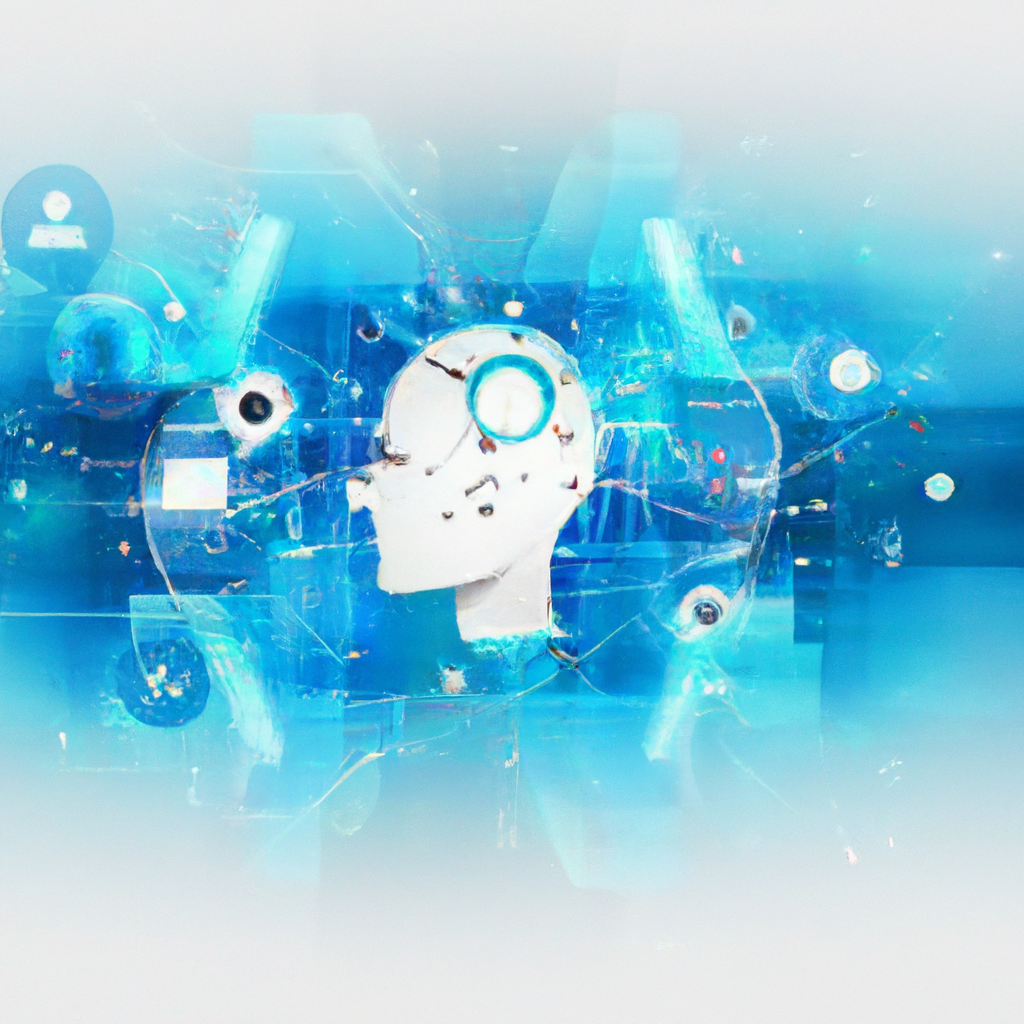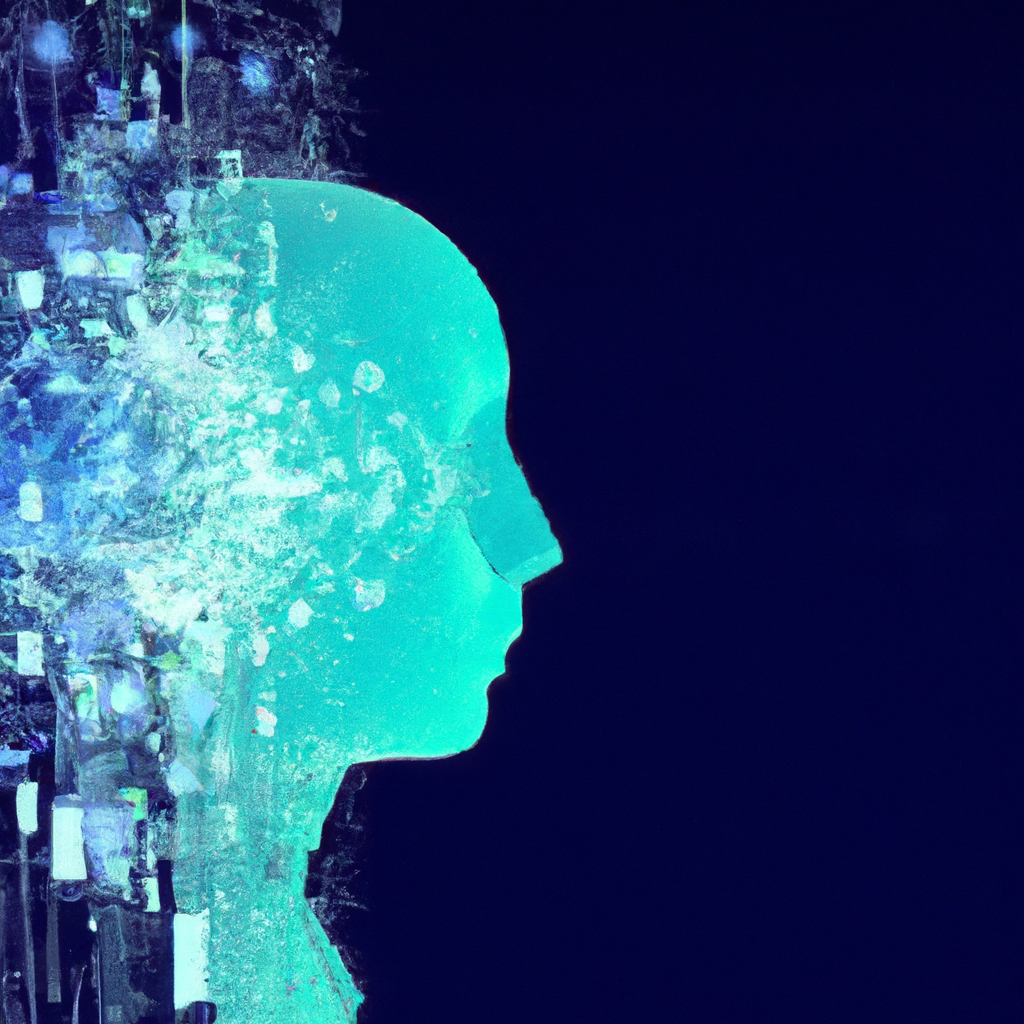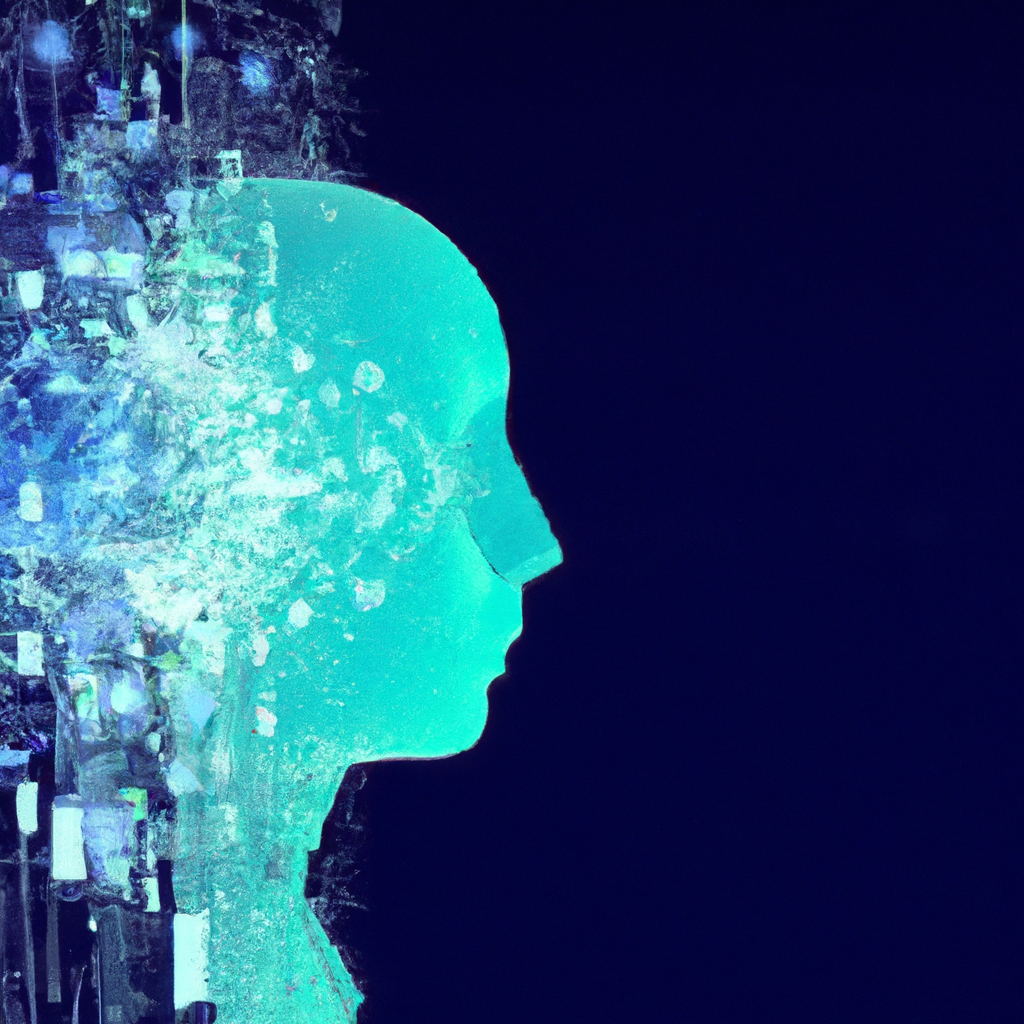Imagine a world where humans and Artificial Intelligence (AI) work hand in hand, collaborating towards a better future. With the rapid advancements in AI technology, the potential for collaboration and innovation seems boundless. From improving healthcare and enhancing education to revolutionizing transportation and tackling climate change, the possibilities are endlessly exciting. By harnessing the power of AI and combining it with human ingenuity, we can unlock new realms of possibility and shape a future that is not only smarter but also more inclusive and sustainable. So, let us delve into the realm of collaboration with AI, and explore how this partnership can pave the way for an extraordinary tomorrow.

Collaboration between Humans and AI
In today’s rapidly advancing technological landscape, collaboration between humans and AI has become more important than ever. AI, or artificial intelligence, has the potential to greatly enhance various aspects of our lives, from healthcare and education to transportation and beyond. By effectively working together with AI systems, we can harness their potential and pave the way for a better future.
The Importance of Collaboration
Collaboration between humans and AI is essential because it allows us to combine the unique strengths and capabilities of both entities. While humans possess creativity, critical thinking, and emotional intelligence, AI excels in data processing, pattern recognition, and automation. By leveraging the power of both, we can achieve remarkable outcomes that would be difficult or impossible for either side alone.
In the context of business and industry, collaboration between humans and AI can lead to increased efficiency, productivity, and innovation. AI systems can analyze vast amounts of data in a fraction of the time it would take for humans to do so, enabling faster decision-making and problem-solving. This allows human workers to focus on more complex tasks that require creativity and intuition, ultimately driving progress and growth in various sectors.
Moreover, collaboration with AI can help address some of the world’s most pressing challenges, such as healthcare, education, and transportation. AI’s ability to process and analyze large amounts of data can aid in medical diagnosis and treatment, personalize learning experiences for students, and optimize transportation systems for increased safety and efficiency.
Harnessing AI’s Potential towards a Better Future
AI holds tremendous potential to positively impact numerous aspects of our lives, but realizing this potential requires effective collaboration between humans and AI. By working together, we can ensure that AI technologies are developed and deployed in a way that aligns with our values and goals, ultimately creating a better future for all.
One key aspect of harnessing AI’s potential is effective communication. Humans and AI must be able to understand and interact with each other seamlessly. This is where natural language processing (NLP) comes into play. NLP allows AI systems to understand and generate human language, enabling more natural and intuitive communication. Through NLP, we can bridge the gap between humans and AI, making collaboration more efficient and user-friendly.
In addition to NLP, chatbots and virtual assistants play a significant role in facilitating communication with AI. These AI-powered systems can interact with users, answer questions, and perform various tasks. Chatbots and virtual assistants have become increasingly sophisticated, mimicking human conversation and providing personalized assistance. They can streamline information retrieval, automate mundane tasks, and offer immediate support, making collaboration with AI more accessible and user-friendly.
Furthermore, voice recognition systems have revolutionized how we interact with AI. Voice assistants like Siri and Alexa have become ubiquitous in our daily lives, allowing us to control devices, search the internet, and perform countless other tasks by simply speaking. Voice recognition technology enables hands-free interaction with AI systems, making collaboration more intuitive and convenient.
AI in Healthcare
The healthcare industry stands to benefit greatly from collaboration with AI. By harnessing AI’s computational power and data analysis capabilities, we can enhance medical diagnosis, treatment, and research.
AI systems can process vast amounts of patient data, including medical records, imaging studies, and genomic information, to identify patterns and make accurate diagnoses. Machine learning algorithms can analyze this data to detect early signs of diseases, predict patient outcomes, and recommend personalized treatment plans. This not only improves the accuracy and timeliness of diagnoses but also helps healthcare professionals make informed decisions about patient care.
Precision medicine is another area where AI shines. Precision medicine aims to provide tailored treatment plans based on an individual’s unique genetic makeup, lifestyle, and environment. AI can analyze massive genomic datasets and identify genetic markers associated with specific diseases or treatment responses. This enables healthcare providers to develop personalized therapeutic interventions, increasing the chances of successful treatment outcomes and minimizing side effects.
Additionally, AI-driven drug discovery has the potential to vastly accelerate the development of new medications. AI can analyze extensive databases of chemical compounds, predict their properties, and suggest potential drug candidates for further exploration. This streamlines the drug discovery process by narrowing down the search space and reducing the cost and time required to bring new drugs to market.

AI in Education
Collaboration between humans and AI is transforming the education landscape by enabling personalized learning experiences, intelligent tutoring systems, and data-driven decision-making.
Personalized learning leverages AI to adapt educational content and instruction to individual students’ needs, interests, and learning styles. AI systems can analyze students’ performance data, identify areas of weakness or strength, and provide tailored recommendations for further study. This individualized approach maximizes student engagement, learning outcomes, and overall educational effectiveness.
Intelligent tutoring systems harness AI to provide interactive and personalized instruction to students. These systems can understand students’ strengths and weaknesses, identify common misconceptions, and offer targeted feedback and guidance. By simulating human tutors, intelligent tutoring systems can provide students with immediate and adaptive support, helping them master complex concepts and overcome learning challenges.
Data-driven decision making in education involves using AI to analyze vast amounts of educational data to inform policy and instructional decisions. AI systems can analyze student performance data, attendance records, and other relevant metrics to identify areas of improvement, evaluate intervention strategies, and optimize resource allocation. This data-driven approach ensures that educational policies and practices are evidence-based and tailored to meet students’ needs.
AI in Transportation
The collaboration between humans and AI in the transportation sector is revolutionizing the way we move people and goods, leading to safer and more efficient transportation systems.
Autonomous vehicles are a prime example of AI’s impact on transportation. By leveraging AI technologies such as computer vision, sensor fusion, and machine learning, autonomous vehicles are capable of navigating and driving without human intervention. These vehicles can detect and respond to their surroundings, including other vehicles, pedestrians, and traffic signals, reducing the risk of accidents caused by human error. Autonomous vehicles also have the potential to optimize traffic flow, enhance fuel efficiency, and reduce congestion.
Traffic management systems powered by AI can further enhance transportation efficiency and safety. AI algorithms can analyze real-time traffic data, including congestion patterns, accidents, and weather conditions, to optimize traffic signal timings, reroute vehicles, and dynamically manage traffic flow. This improves overall traffic efficiency, reduces travel times, and minimizes the environmental impact of transportation.
Moreover, AI plays a crucial role in developing smart infrastructure, which integrates AI technologies and data to enhance transportation systems. For example, AI can enable predictive maintenance of transportation infrastructure by analyzing sensor data and identifying potential maintenance needs before they cause disruptions. Smart infrastructure also allows for adaptive and responsive transportation networks, making them more resilient to unforeseen events such as natural disasters or sudden increases in demand.

Ethical Considerations of AI Collaboration
While collaboration between humans and AI offers immense potential for positive outcomes, it also brings about ethical considerations that must be addressed. Transparency and accountability, bias in algorithms, and privacy and security are among the key ethical concerns related to AI collaboration.
Transparency and accountability are essential for ensuring that AI systems operate in a fair and responsible manner. It is crucial that the decision-making processes and underlying algorithms of AI systems are transparent, allowing humans to understand and challenge their outcomes. Furthermore, mechanisms for holding AI systems accountable for their actions should be in place, ensuring that they do not perpetuate discrimination or biases.
Bias in algorithms is another ethical concern of AI collaboration. AI systems learn from historical data, which may contain biased patterns or discriminatory practices. If AI algorithms are trained on biased data, they can perpetuate and amplify existing biases, leading to unfair outcomes. Addressing bias in algorithms requires careful data collection, diverse and inclusive training datasets, and continuous monitoring and auditing of AI systems to ensure fairness and equity.
Privacy and security are also critical considerations when collaborating with AI. As AI systems increasingly rely on personal data, it is crucial to establish robust privacy protections and data security measures. AI should be developed and deployed in a way that respects individuals’ privacy rights, ensures the confidentiality and integrity of sensitive information, and prevents unauthorized access or abuse of data.
Challenges and Solutions for Collaboration
While the collaboration between humans and AI holds great promise, there are several challenges that need to be addressed for successful and effective collaboration. Technical limitations, reskilling and workforce adaptation, and regulatory frameworks are among the key challenges that need to be overcome.
Technical limitations pose a challenge to AI collaboration, as current AI systems still have limitations in terms of understanding context, reasoning, and common sense. To improve collaboration, AI systems need to develop a deeper understanding of human language, context, and emotions. This requires advancements in natural language processing, machine learning algorithms, and human-centered design principles.
Reskilling and workforce adaptation is another significant challenge in AI collaboration. As AI systems automate certain tasks, the workforce needs to adapt and reskill to remain relevant in the changing job market. Upskilling programs, lifelong learning initiatives, and supportive policies can help individuals acquire the necessary skills and competencies to collaborate effectively with AI.
Regulatory frameworks play a crucial role in ensuring the responsible and ethical use of AI. Developing appropriate regulations and guidelines is necessary to address concerns such as privacy, bias, accountability, and safety. Clear and enforceable regulations can provide a framework for collaboration, ensuring that AI is deployed in a manner that benefits society while respecting ethical considerations.

Collaboration Models between Humans and AI
Various collaboration models exist between humans and AI, each with its own strengths and applications. The augmentation model, automation model, and human-AI symbiosis model are three prominent models that shape the way humans and AI work together.
The augmentation model focuses on enhancing human capabilities through AI. In this model, AI acts as a tool or assistant, allowing humans to perform their tasks more efficiently and effectively. AI systems can assist with data analysis, decision-making, or repetitive tasks, freeing up human workers to focus on higher-level tasks that require creativity and problem-solving skills.
The automation model aims to replace human labor with AI systems in tasks that can be fully automated. This model is particularly applicable in repetitive, data-intensive, or dangerous tasks where AI can perform with higher speed, accuracy, and safety compared to humans. However, this model also raises concerns about job displacement and the impact on employment rates.
The human-AI symbiosis model emphasizes an integrated and collaborative approach between humans and AI. In this model, humans and AI work together in a complementary and mutually beneficial manner. AI systems support human decision-making, provide insights and recommendations, and augment human abilities. This model recognizes the unique strengths of both entities and encourages collaboration to achieve superior outcomes.
Building Trust and Overcoming Fear
To fully realize the potential of collaboration between humans and AI, it is essential to build trust and overcome fear. Transparent and explainable AI systems, education and public awareness, and addressing job displacement fears are key strategies to foster trust and acceptance.
Transparency and explainability are crucial to building trust in AI systems. Humans must be able to understand how AI systems make decisions, the data they use, and the reasoning behind their recommendations. Explainable AI can help humans comprehend and verify the outputs and ensure that they align with ethical and legal standards. Transparency also enables accountability and allows for the detection and correction of biases or errors.
Education and public awareness play a vital role in overcoming fear and mistrust of AI. Public education campaigns, workshops, and forums can help demystify AI, dispel myths, and foster a better understanding of AI technologies and their potential benefits. By increasing knowledge and awareness, individuals can make informed decisions and actively participate in AI collaboration.
Addressing job displacement fears is another critical aspect of building trust. While AI may automate certain tasks, it is unlikely to completely replace human labor. Rather than fearing job loss, reskilling and upskilling programs can help individuals adapt to the changing job market. By enabling workers to acquire new skills and transition into higher-value roles, we can mitigate job displacement concerns and foster a sense of security and optimism.

Future Perspectives
Looking ahead, AI’s collaboration with humans will continue to shape our work and society in significant ways. Understanding the potential impact and implementing ethical guidelines will be crucial to navigate this evolving landscape successfully.
AI’s impact on work and society will become more pronounced as AI systems become more advanced and widely deployed. While some jobs may be automated, new job opportunities will arise, necessitating the development of skills and competencies that complement AI technology. Upskilling programs, educational initiatives, and proactive labor market policies will play a crucial role in ensuring a smooth transition and maximizing the benefits of collaboration.
Ethical guidelines for AI collaboration are essential for safeguarding individuals’ rights, privacy, and well-being. These guidelines should address concerns such as privacy, bias, explainability, accountability, and safety. They should guide the development, deployment, and use of AI systems to ensure they align with human values and societal needs. Ethical guidelines should be continuously updated and reviewed, in collaboration with stakeholders, to adapt to emerging challenges and advancements in AI technology.
Embracing the opportunities presented by collaboration between humans and AI is vital for a better future. By harnessing AI’s potential, leveraging its capabilities, and addressing ethical considerations, we can create a world in which AI and humans collaborate harmoniously to drive progress, improve lives, and build a more inclusive and equitable society.










